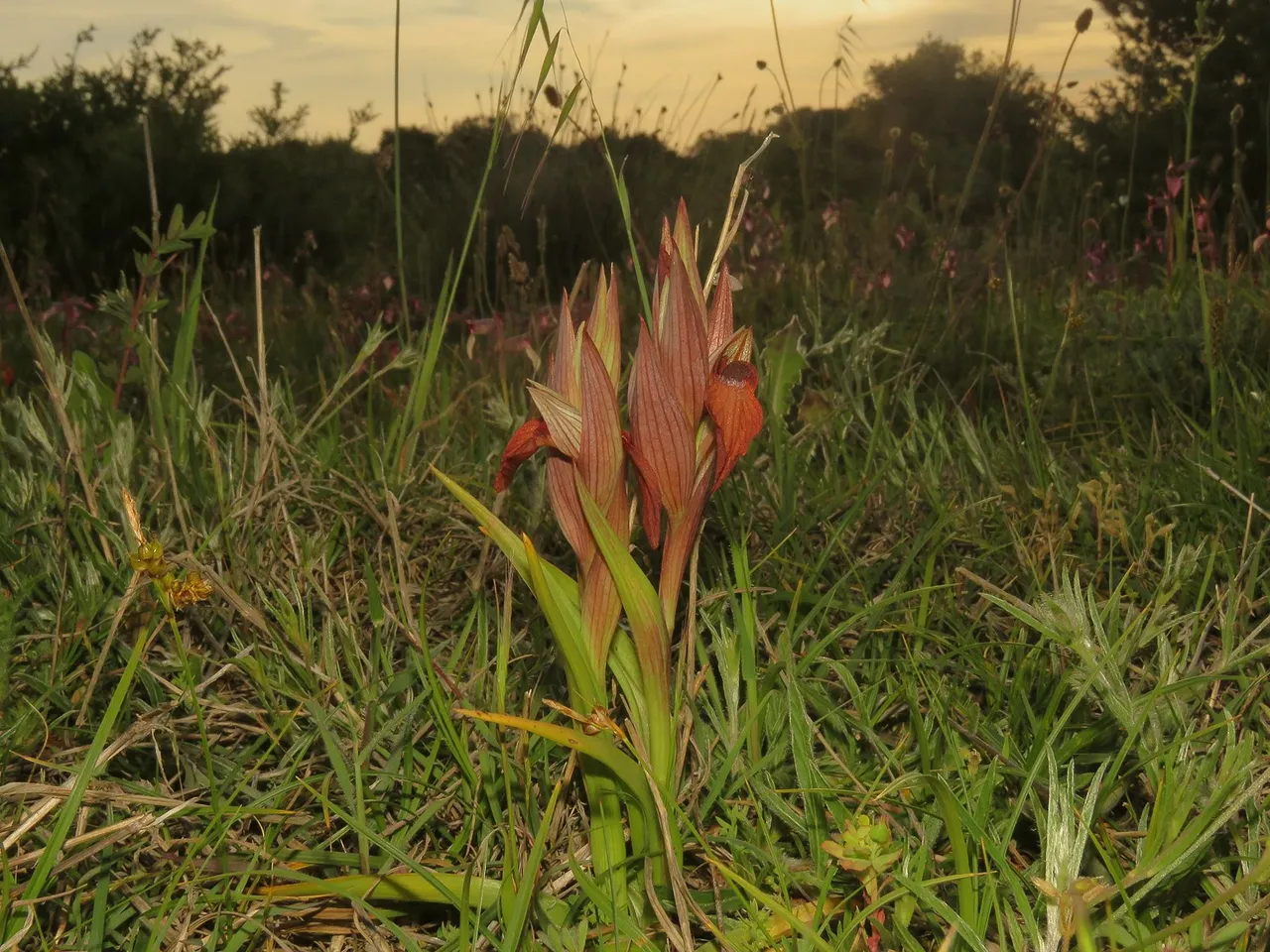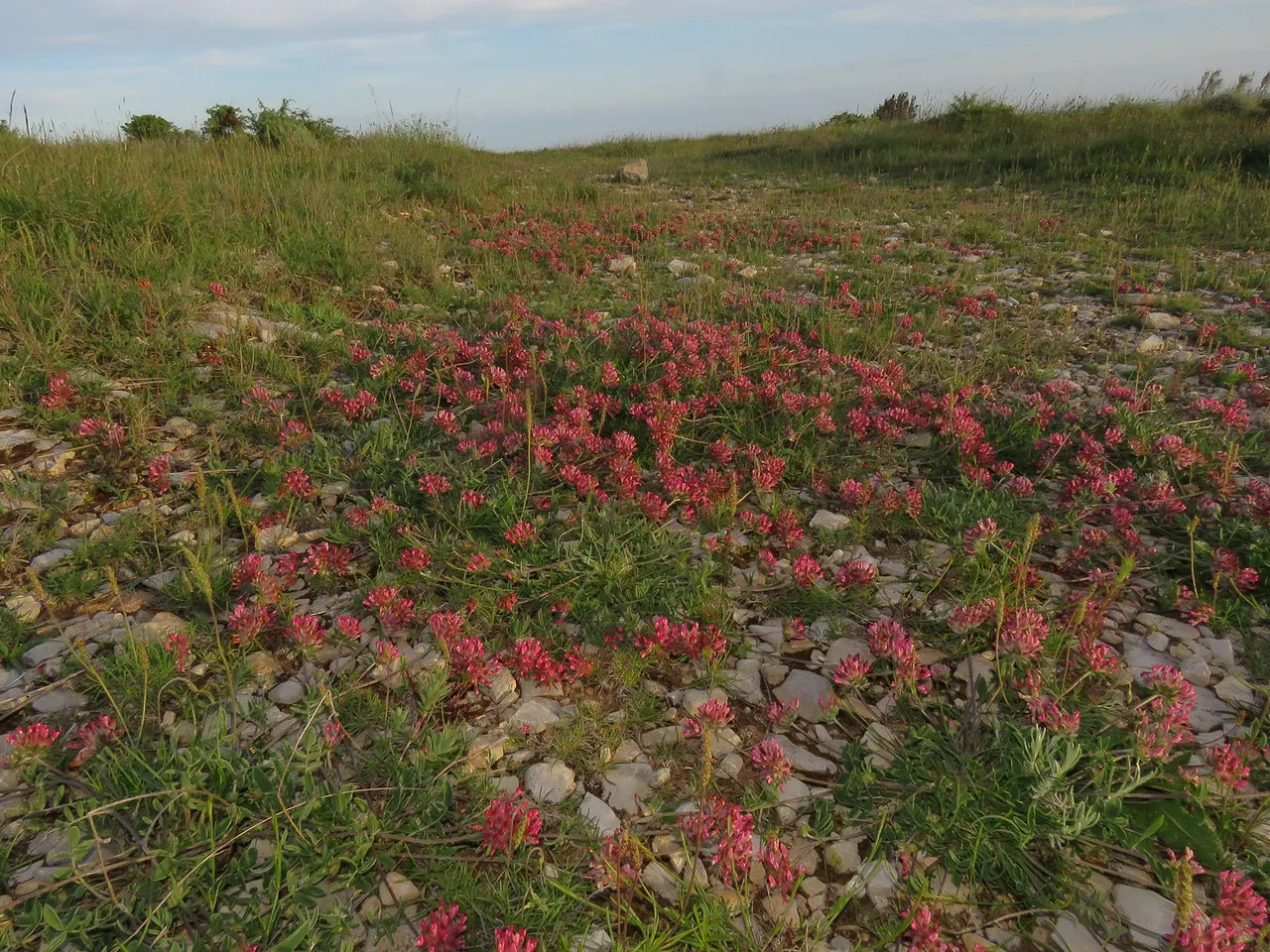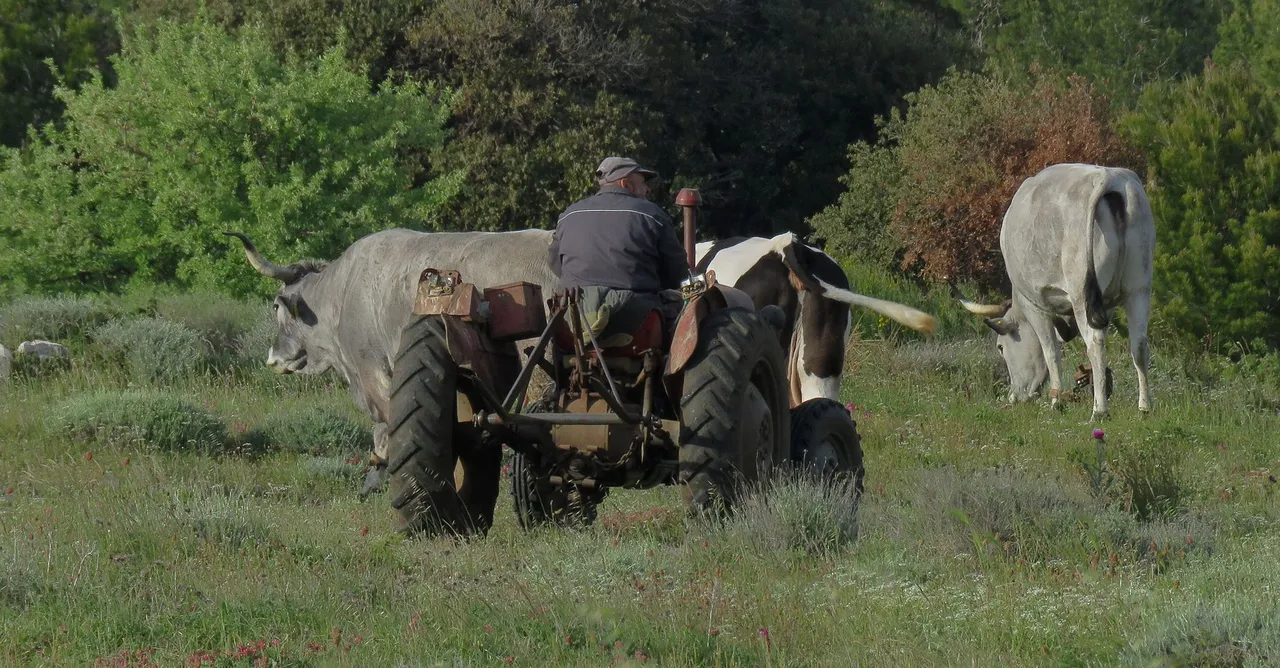When the spring comes to the southern cape of Istra, the relatively dull, uniformly dark green, winter look of the vegetation on that stony stretch of coastline, explodes in many colors ...
... and among many interesting shapes that appear in the season of the greatest abundance ...
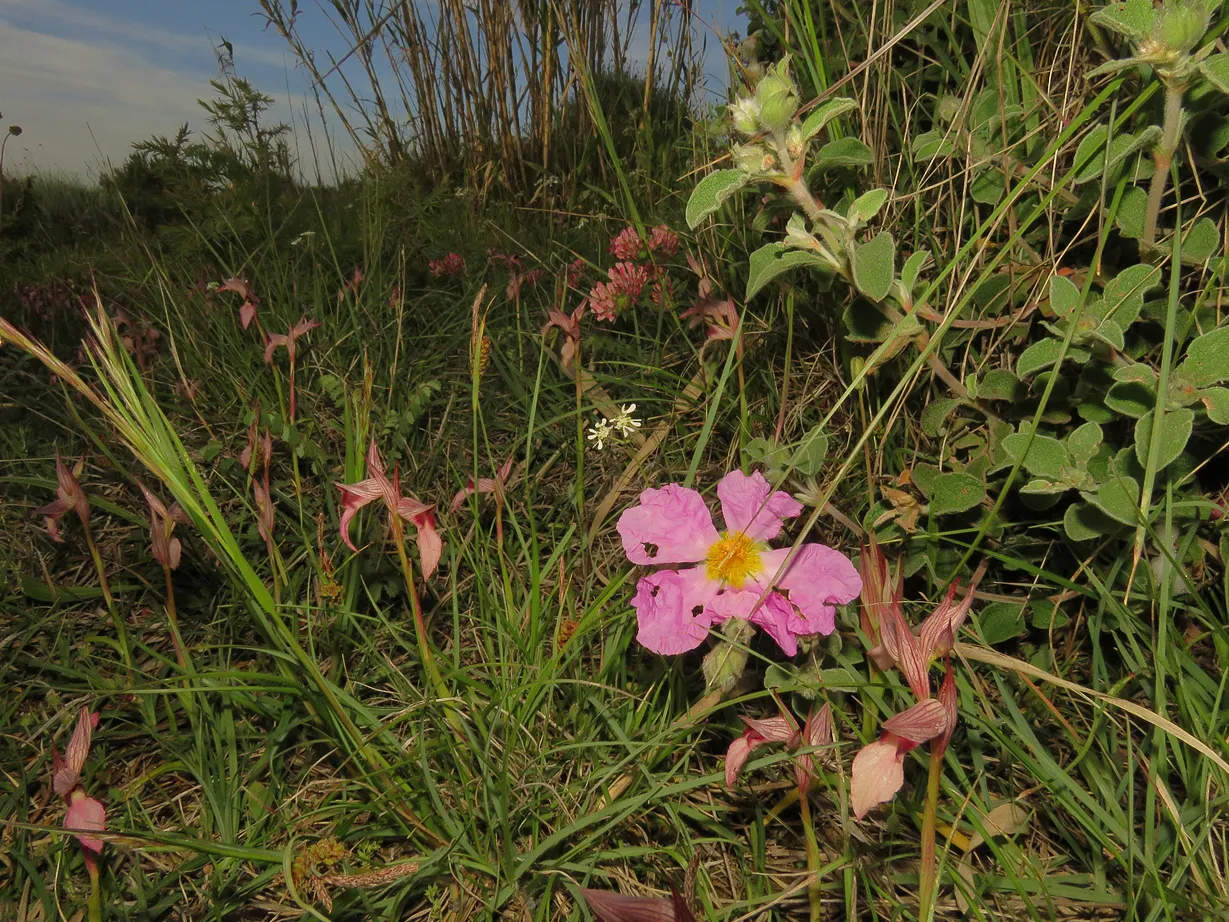
... among many kinds of colorful flowers ...
... the small wild orchids definitely hold a special place.
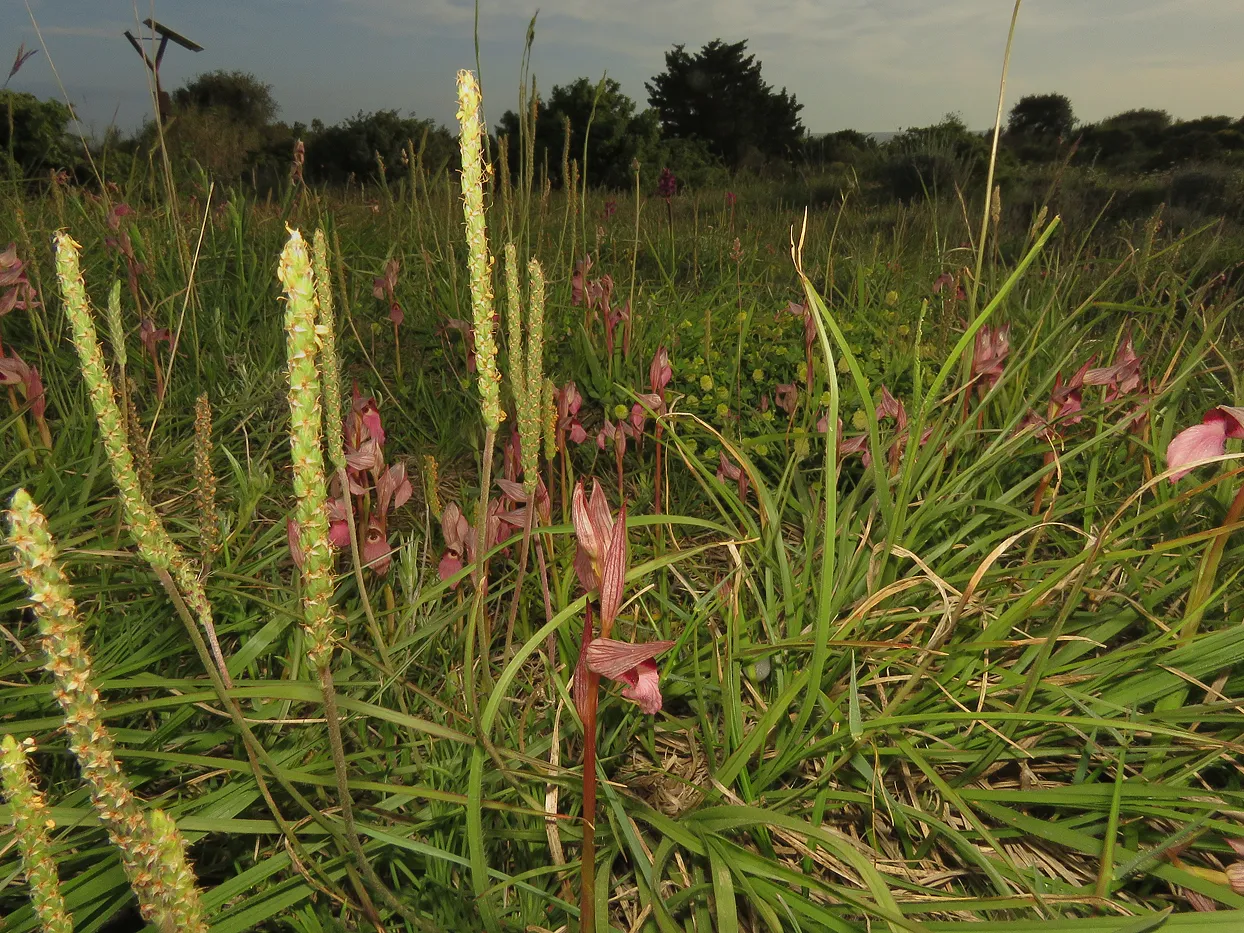
If you are into orchids, this is a place for you ...
... when it comes to observing and photographing a wide variety of wild, self - seeding species in their natural habitat, there's no better place in Croatia ...
... so this long, narrow peninsula has become a protected area where no hotels or other infrastructures for the tourist industry can be built.

People can only come to enjoy the wild beaches ...
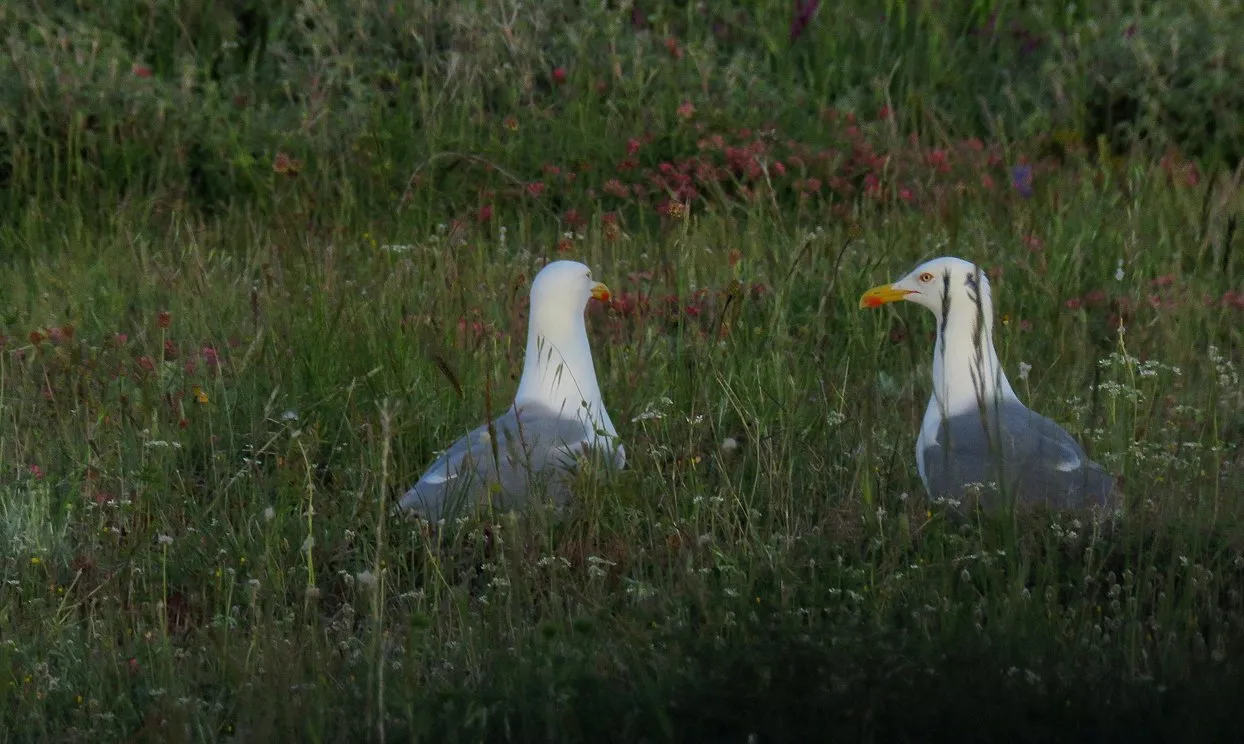
... or walk around and enjoy the biodiversity ... like these two seagulls that look exactly like two tourists enjoying the evening among the flowers.
The third seagull was looking for something edible on the ground. These are the Yellow-legged gull (Larus michahellis).
Some decades ago, most of the orchids you'll see in this post could be seen on the coastal slopes and meadows in the larger area, around my hometown as well ... but now, they can be found only here.
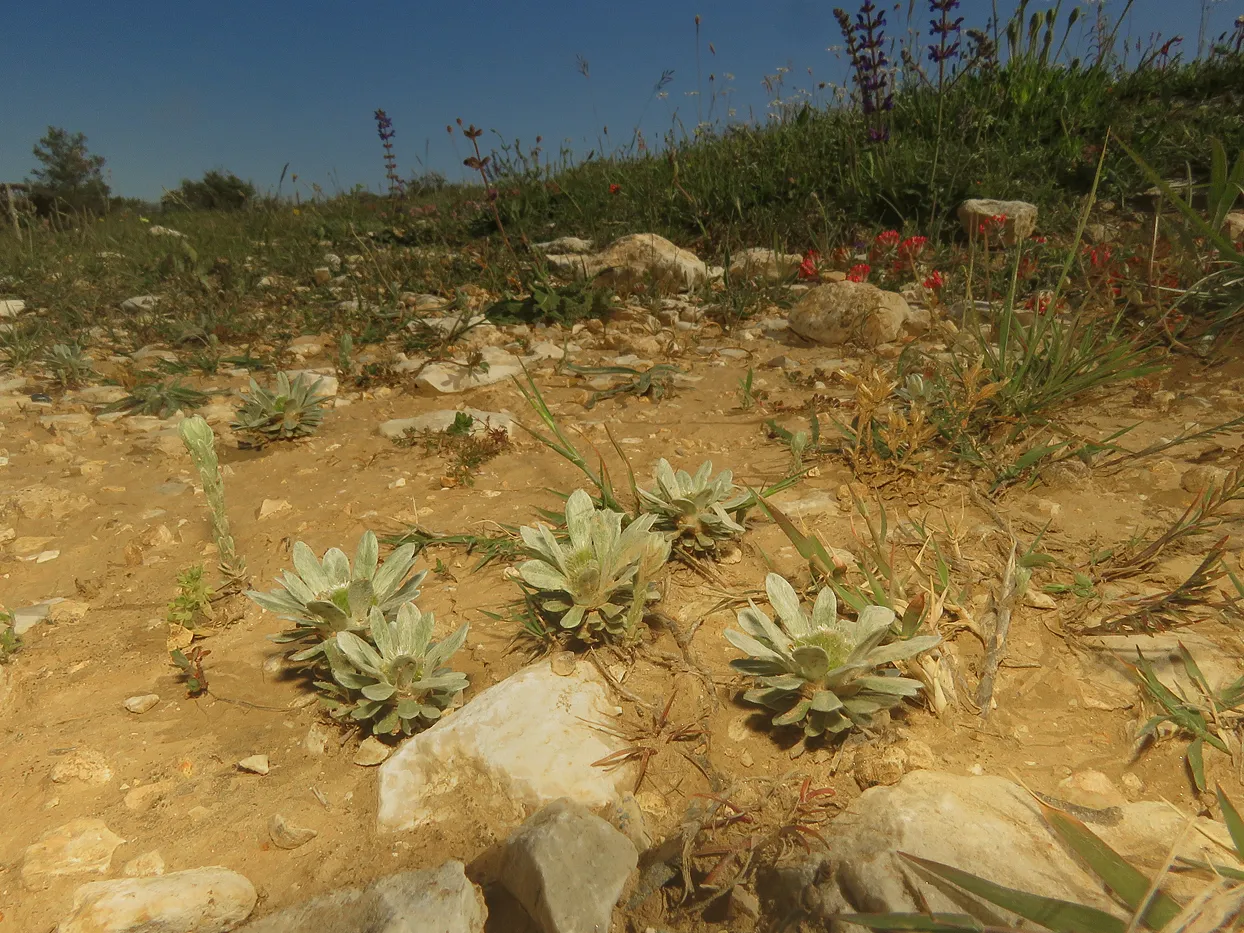
The name of this place is Rt Kamenjak, which means, more or less - The Stony Cape.
The park is about 7 kilometers long peninsula, on average 1 kilometer wide, and its end is the most southern point of the Istra peninsula.
Another two and a half kilometers from the cape, on the small islet called Porer, there is a lighthouse built in 1830 ...
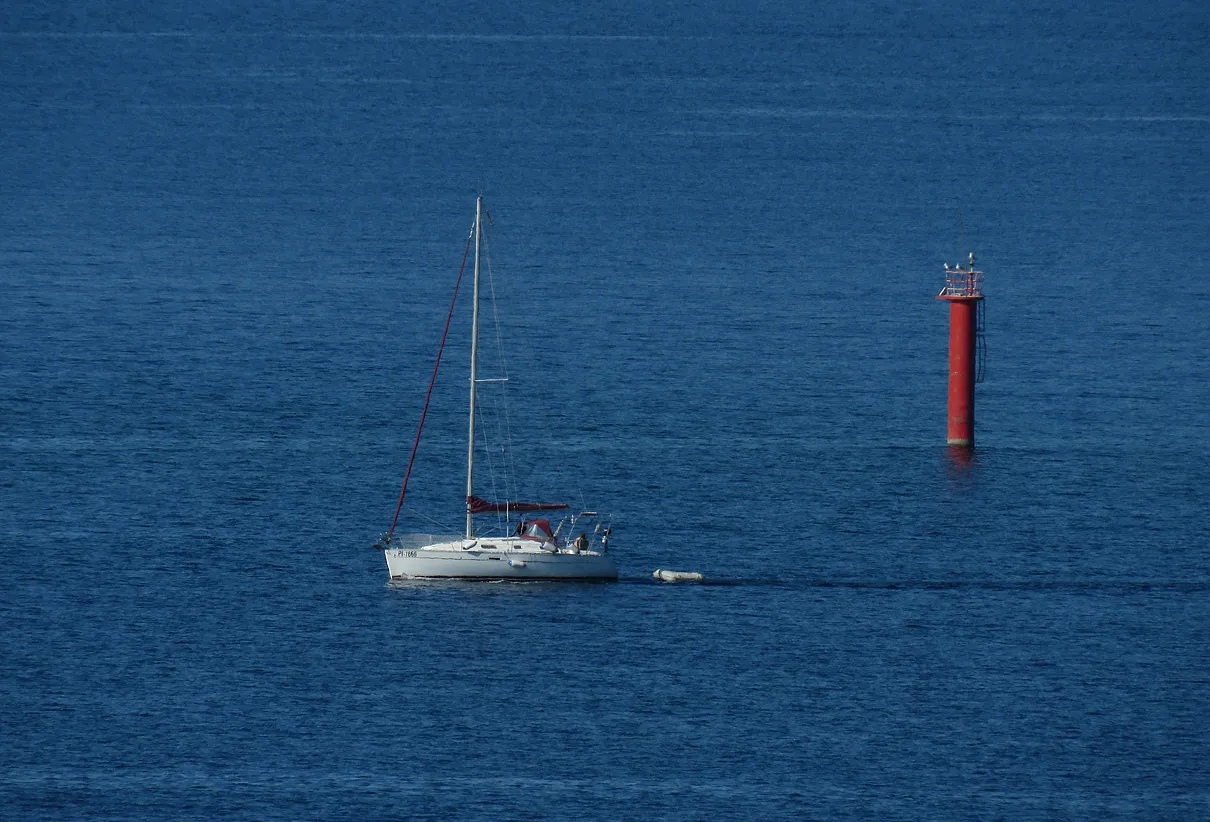
... and beyond that ...
... only the open blue Adriatic ... until the coast of Italy across the sea.
I'll pin the post to the pinmapple, sou you can see there how it all looks on the world map, and where this place exactly is. And now ...
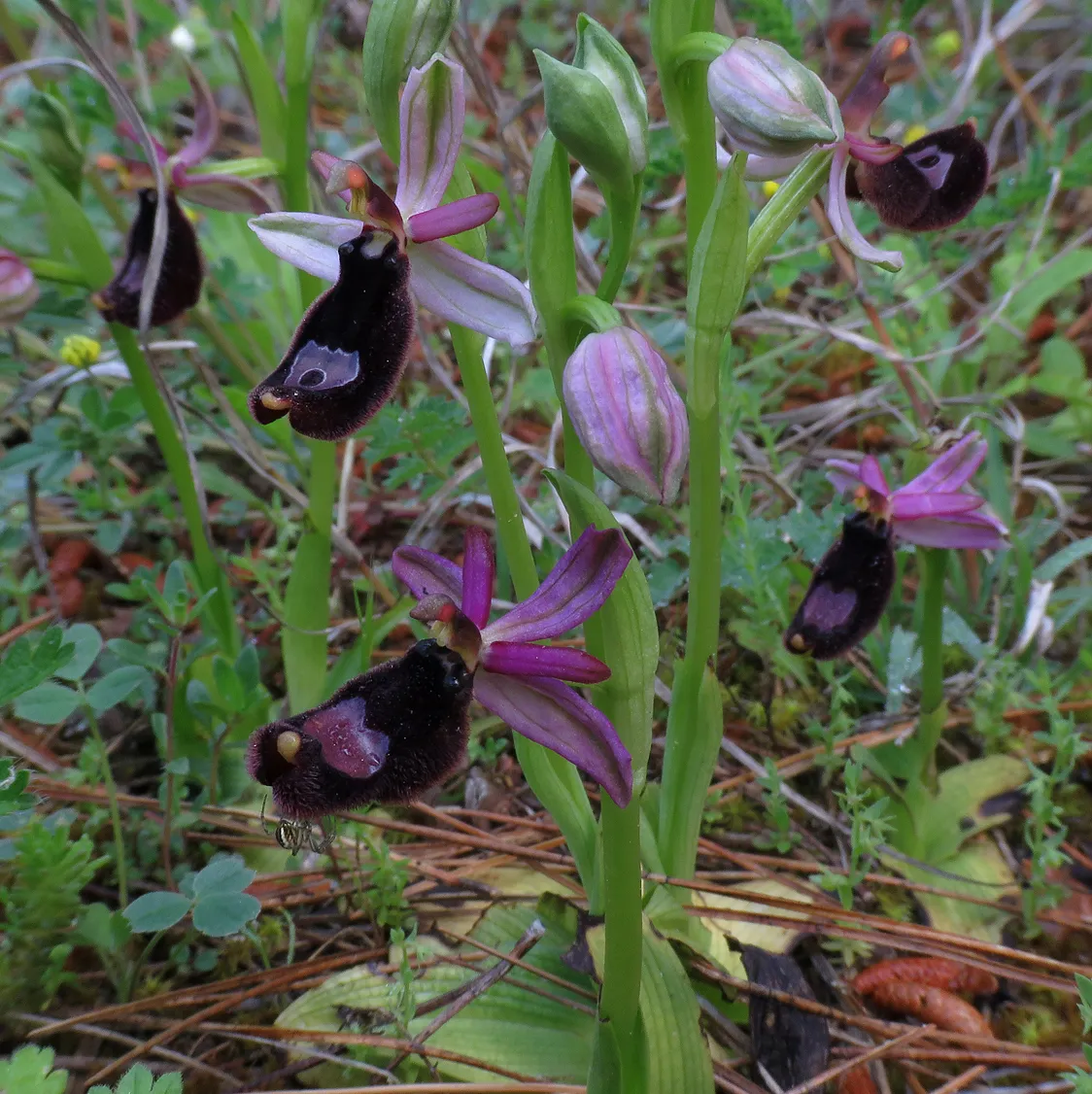
... is time to put the focus back on the orchids ...
... because they are the main protagonists of this post.
These are the Ophrys bertolonii, commonly known as Bertoloni's bee orchids.
This is one of quite a few species that uses chemical and visual mimicry to attract male bees, their main pollinators.
These interesting flowers are a joy to photograph. The color and shine of the shiny, heart - shaped part in the middle of the labellum, the furry part that acts as the main attraction for bees, changes depending on the source and direction of light. This shot was taken with the flash on.
Here you can see how it looks in the subdued blue light at dawn ...
... when the plants are covered with dew.
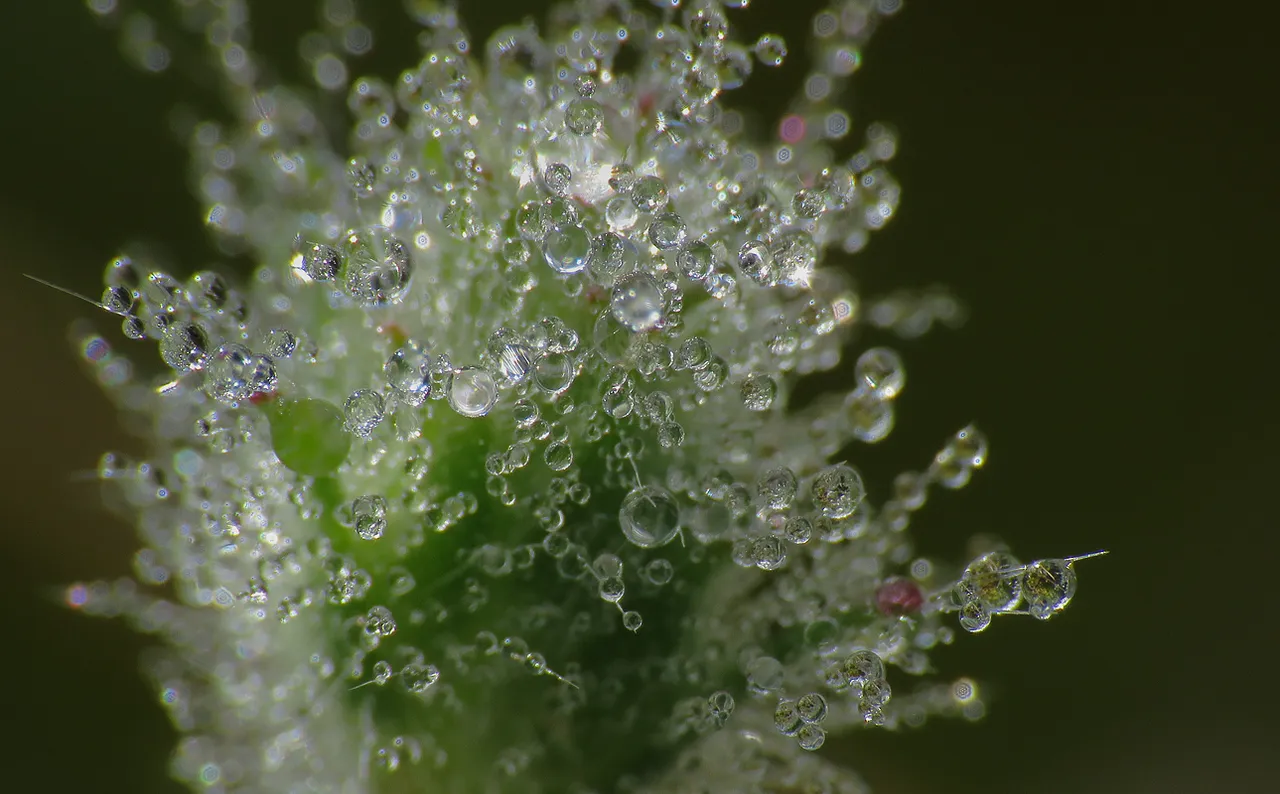
There is a spectacle of droplets on display almost every morning during the first half of spring ...
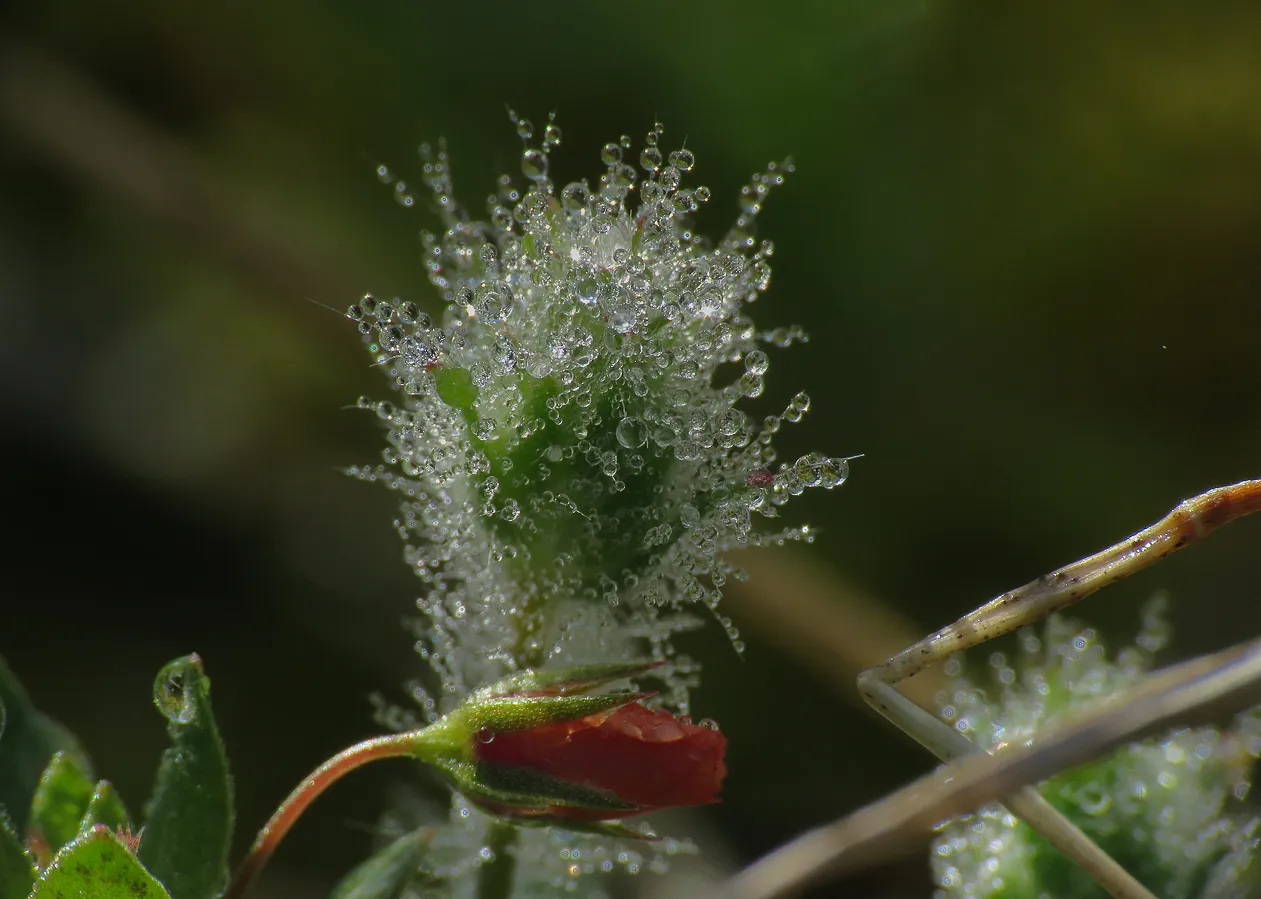
... and even many small, modest 'plants look fantastic with these temporary decorations.
Here you can see the fresh, not completely opened and developed flowers of the Ophrys bertolonii.
While photographing the orchids on that humid morning, the Armadillidium vulgare pill - bugs were active, so they ended up in this post along with the flowers.
Ophrys bombyliflora, commonly known as the bumblebee orchid ...
... shares the same stony habitat with the Ophrys bertolonii ...
... and also uses wild, solitary bees as its main pollinators.
Here you can see the Formica fusca ant exploring the flowers.

The bee orchid (Ophrys apifera) grows on better soil, among taller vegetation at the northern edge of the park. As the name clearly suggests, this species also uses wild bees as pollinators.
This Anacamptis papilionacea ...
... commonly known as the pink butterfly orchid, it's a differently shaped orchid.

Pollination of these showy flowers is carried by different insect species.
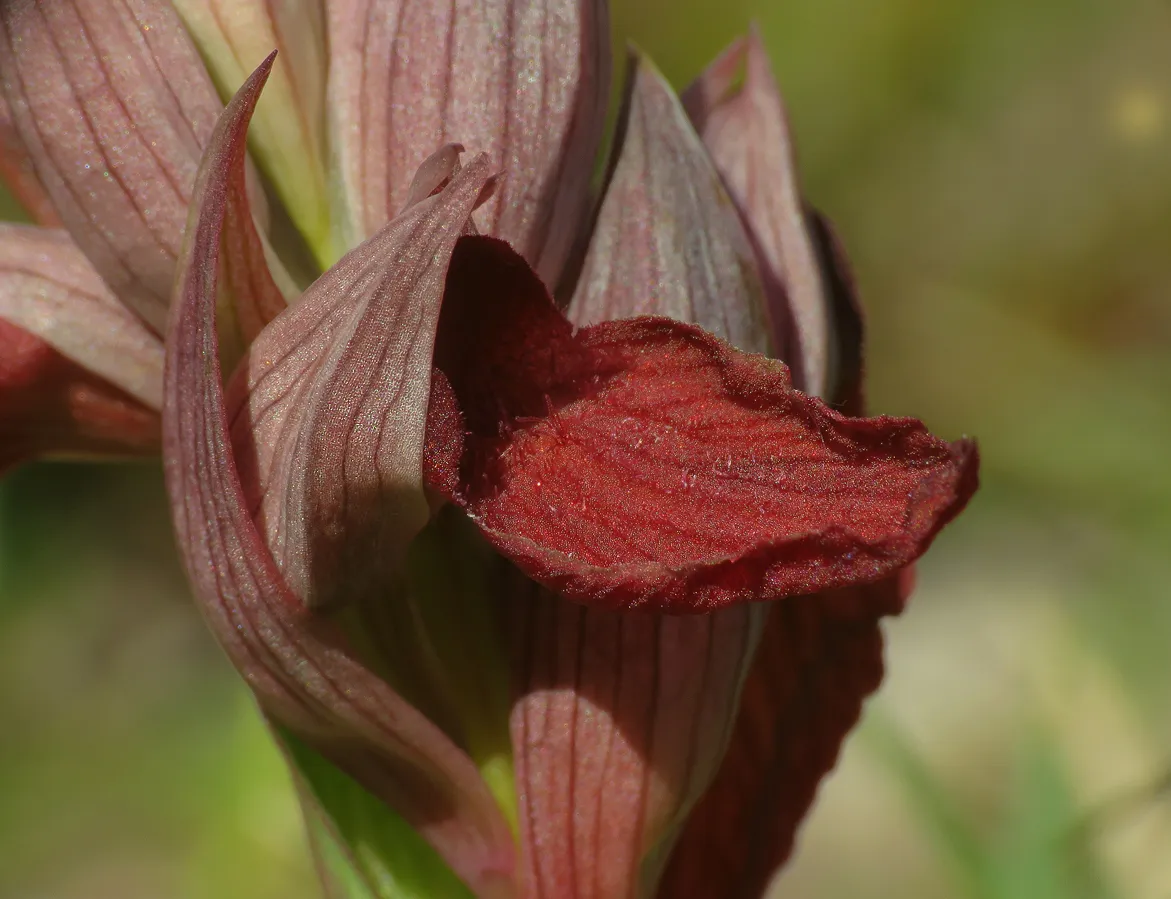
On this, and the seven following photographs ...
... you can see the Serapias vomeracea, commonly known as Long-lipped Tongue-orchid.
This robust plant with beautiful, vivid flowers can grow up to 60 cm tall.
Serapias vomeracea is an entomophilous plant, which means that it relies on insects for the pollination, but cannot offer floral rewards to pollinators as it does not produce nectar ... nor it has a mimicry mechanism to attract male bees on their quest to find a female and reproduce.
Therefore, this species has a different strategy, some kind of third, alternative way to do the pollination thing. The insects are attracted by the shape of the flower that forms a small tube where they can rest by night, or it can be used as a refuge from the rain. That way, during their stay in the flower's interior, the pollen gets attached to their bodies, and can be carried to the next flower.
Here you can see another Serapias orchid that uses the same pollination strategy.
This is the Serapias lingua, commonly known as the tongue-orchid or the tongue Serapias ...
... a species that dominates in the dry and windy area at the southern end of The Stony Cape.
This is the Anacamptis morio, commonly known as the green-winged orchid or green-veined orchid. These purple flowers do not produce nectar, but can attract pollinators purely with their visual appearance. Before the insects become aware that there's no sweet nectar here, enough pollen gets attached to them.
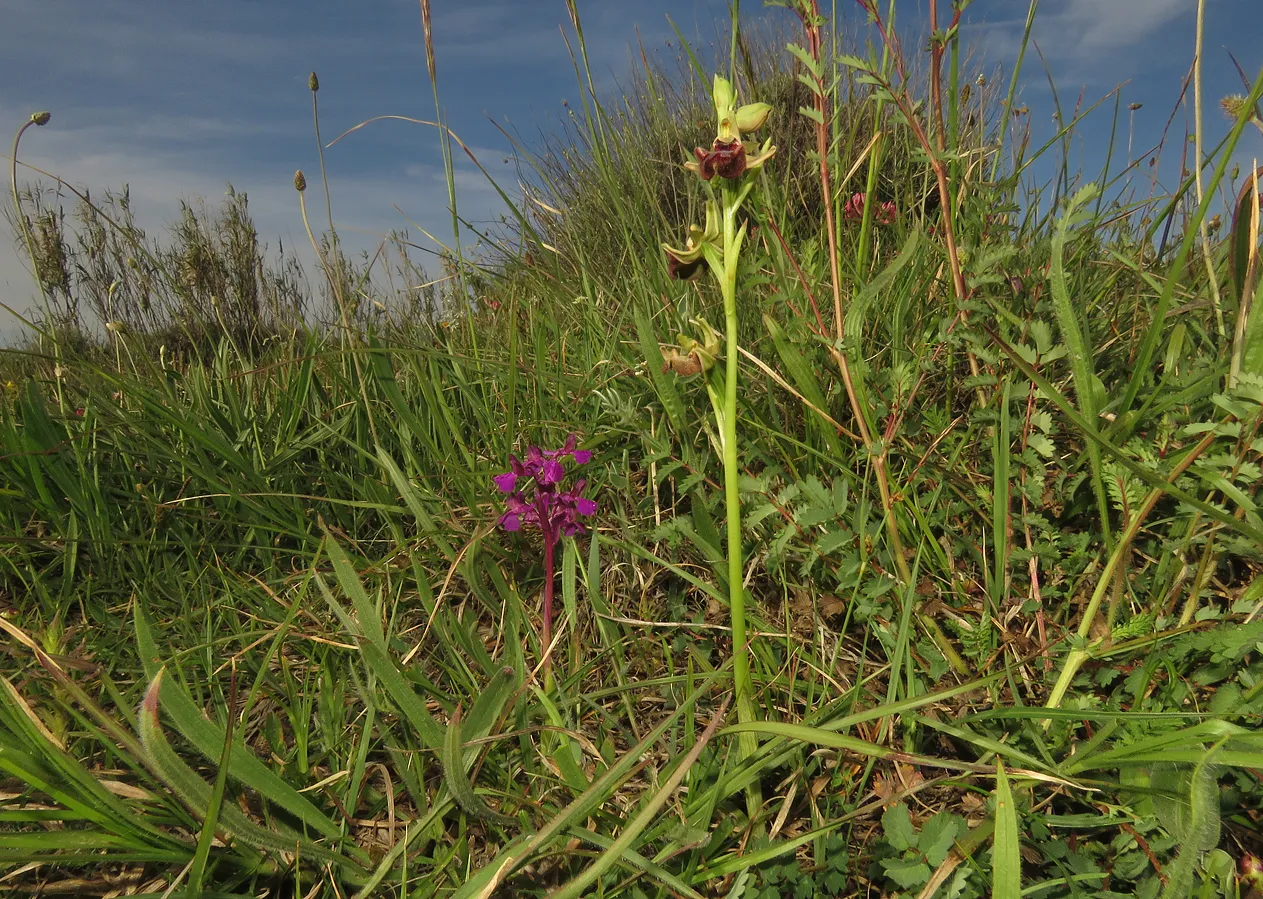
Here you can see the Anacamptis morio growing near another interesting species ...
... the considerably taller Ophrys incubacea, commonly known as spider orchid.

This species can be found on the dry, stony terrain with sparse, low vegetation.
This is yet another species that attracts some species of wild bees, using the visual and chemical mimicry.
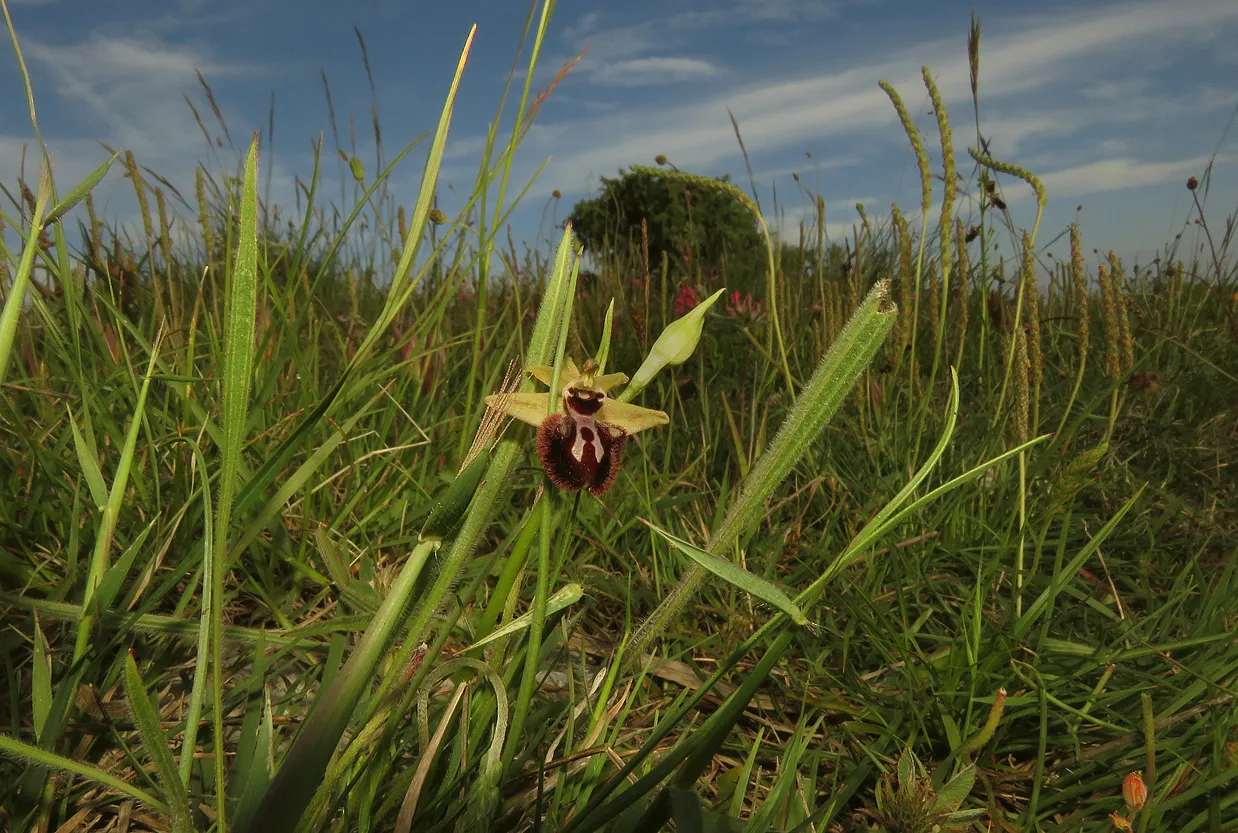
Beside that furry appearance that slightly resembles some kind of bee, or bumblebee, the plant attracts the male bees also by producing substances that mimic the female pheromones.
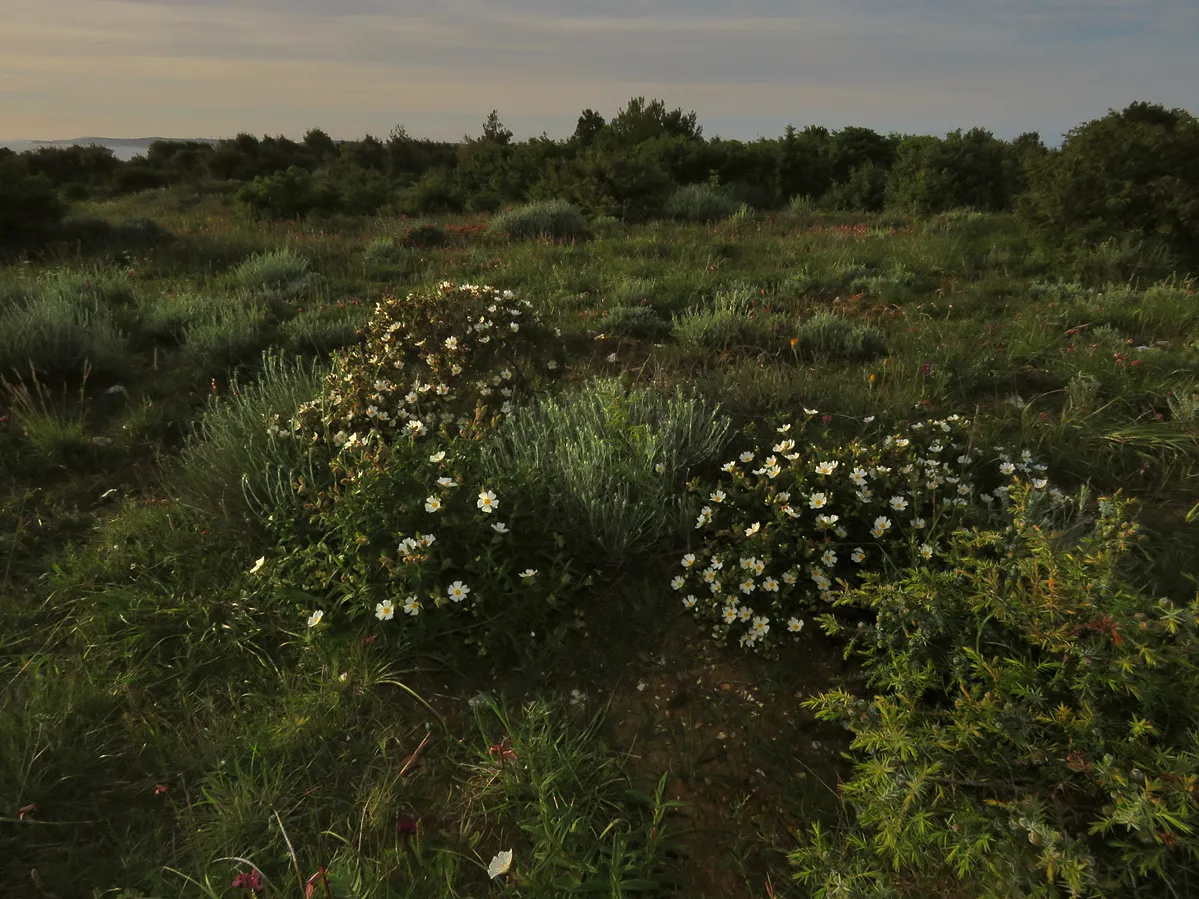
I took all the photographs in this post, in the days in between second and sixth May 2021.
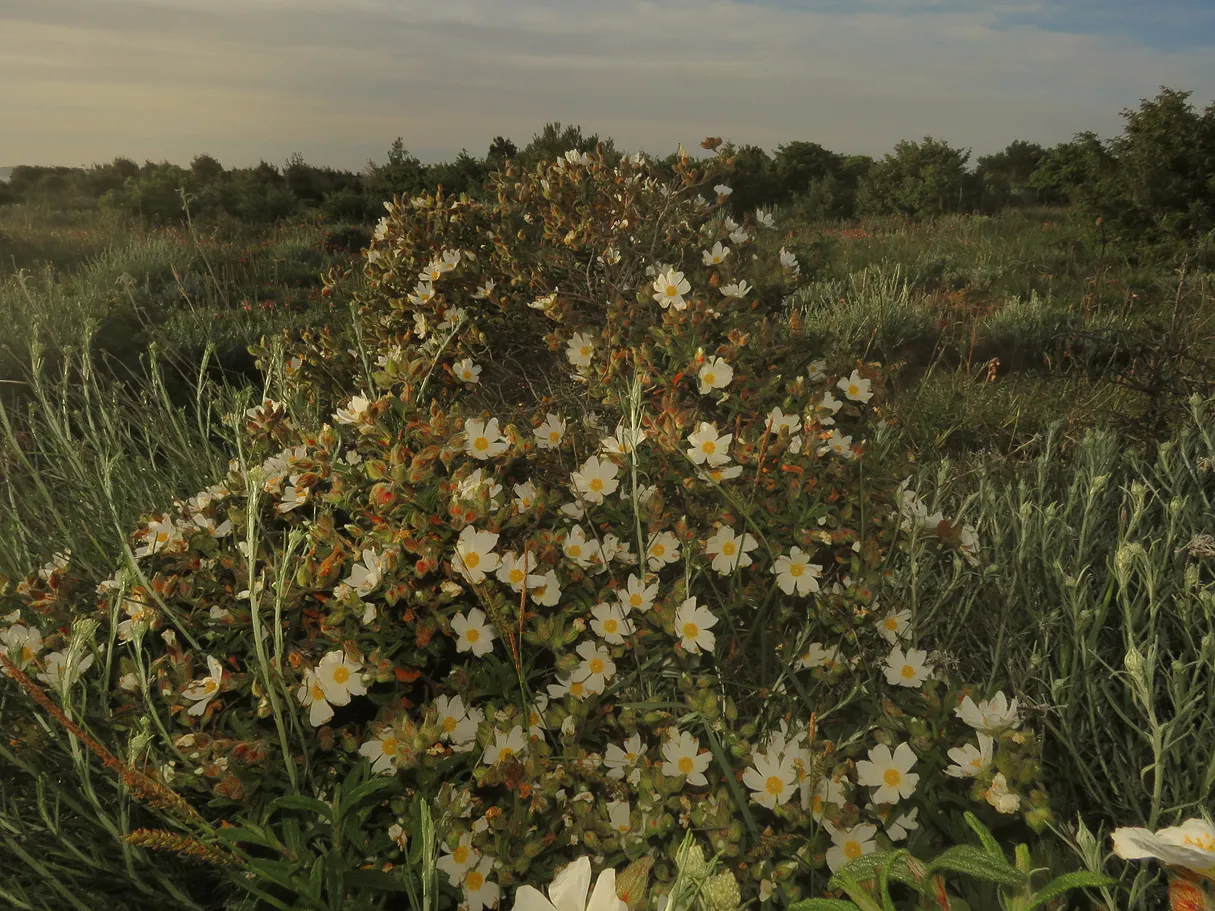
Many other plants were in bloom during that period.

The Cistus monspeliensis shrubs ...
... that are able to produce white flowers in spectacular numbers ...
... the Anthyllis vulneraria ... that creates colorful carpets in some stony areas ...
... the Urospermum dalechampii with its big yellow flowers ...
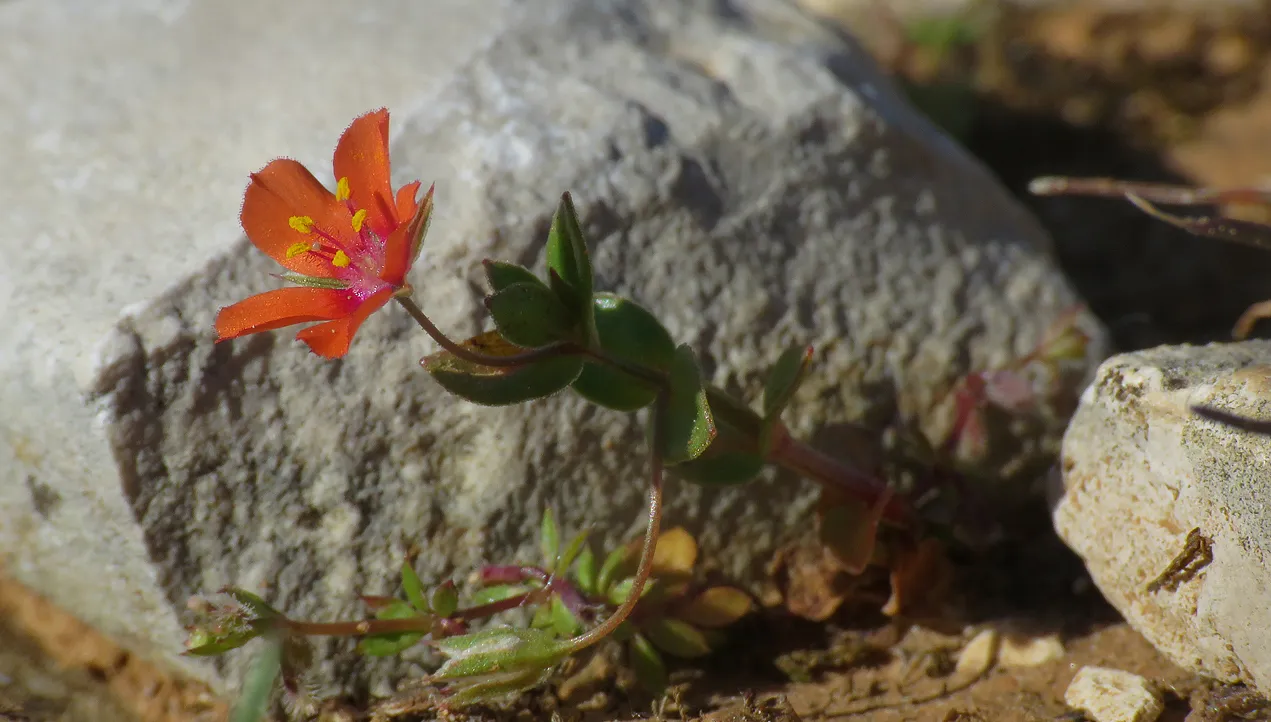
... the Lysimachia arvensis ...
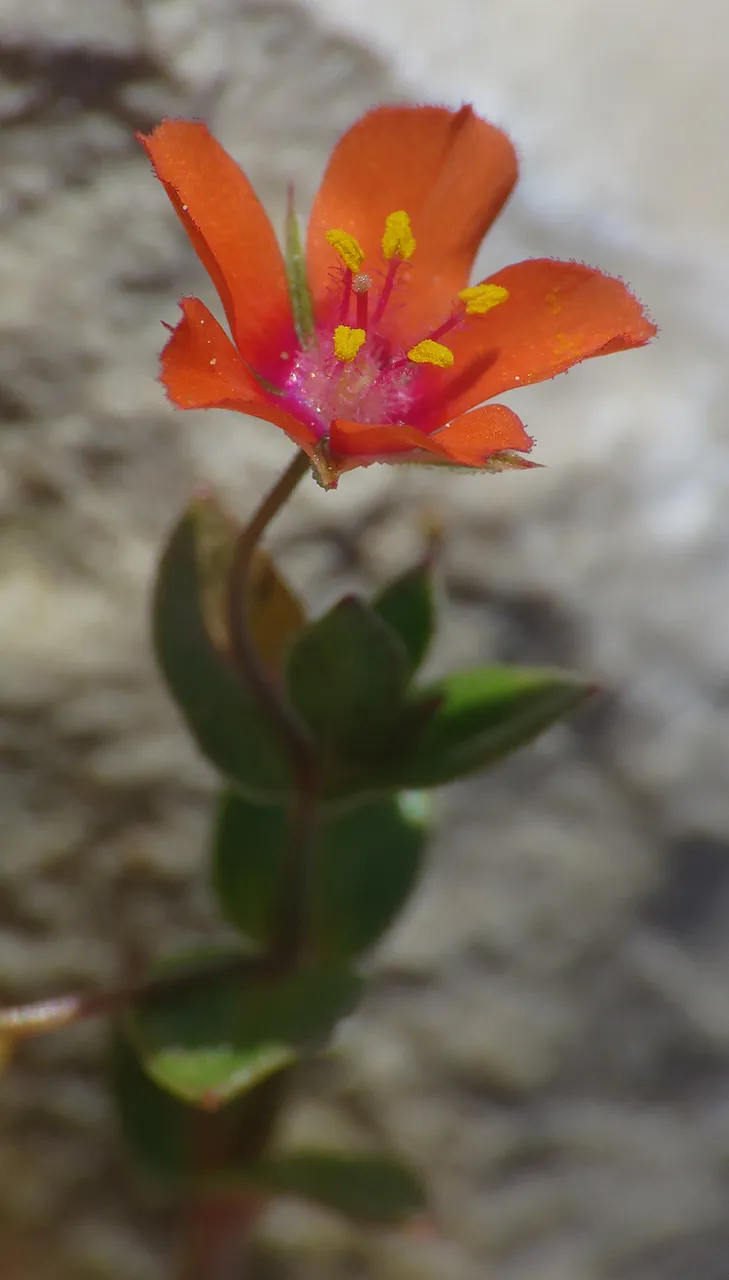
... that adds to the seasonal mix the elegant beauty of its minuscule flowers ... and many more.
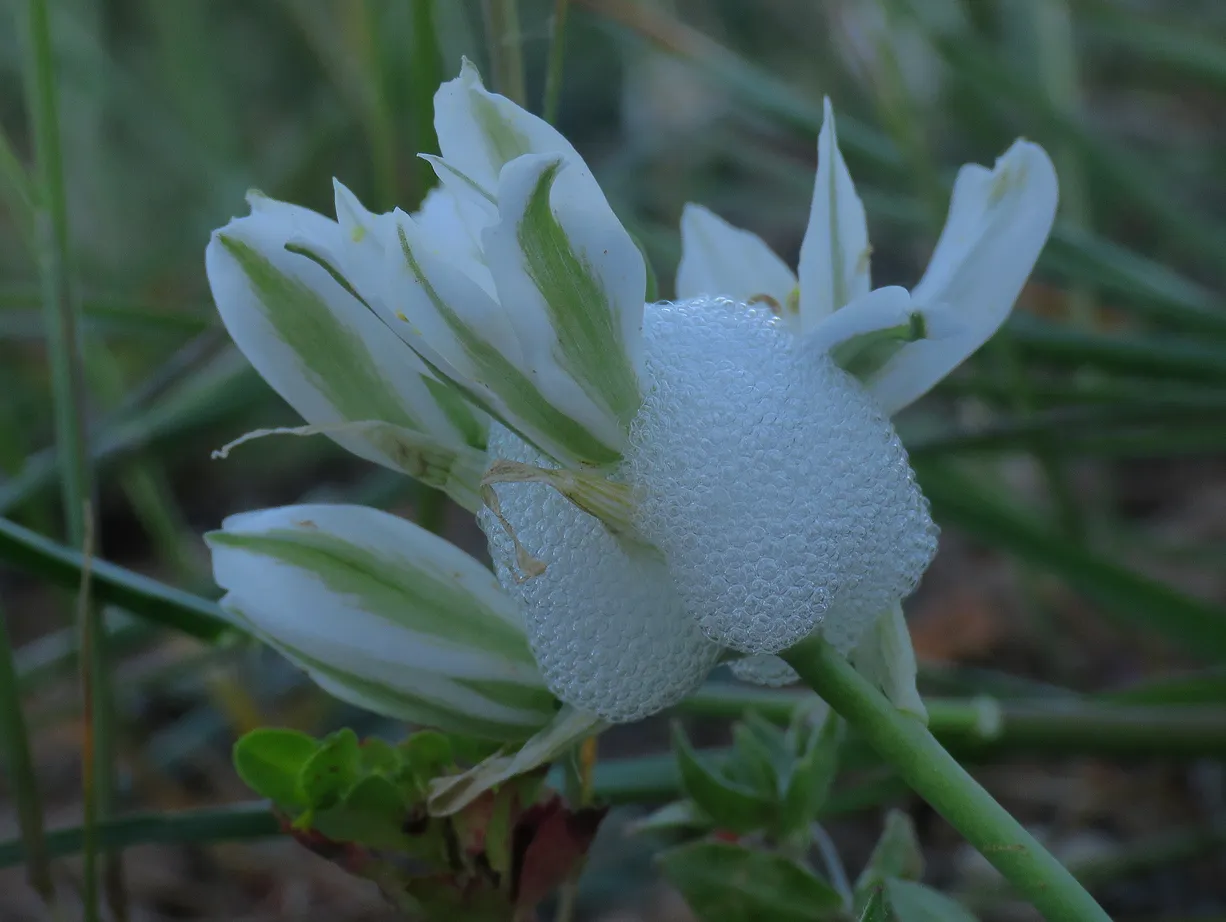
Here, you can see the foamy shelter that some spit bug created around the Ornithogalum umbellatum flowers.
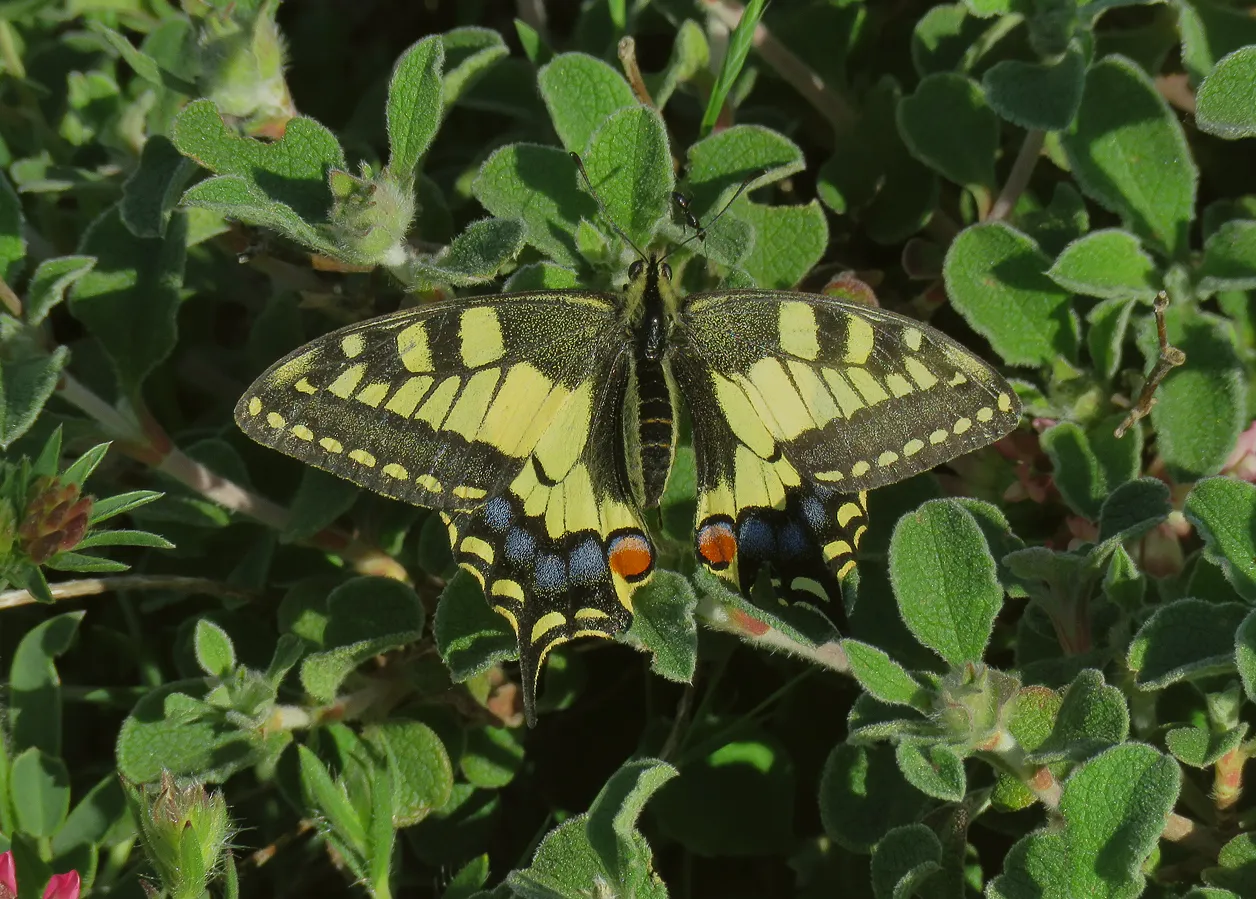
On this shot, the Papilio machaon swallowtail is posing on the Cistus salviifolius shrub.
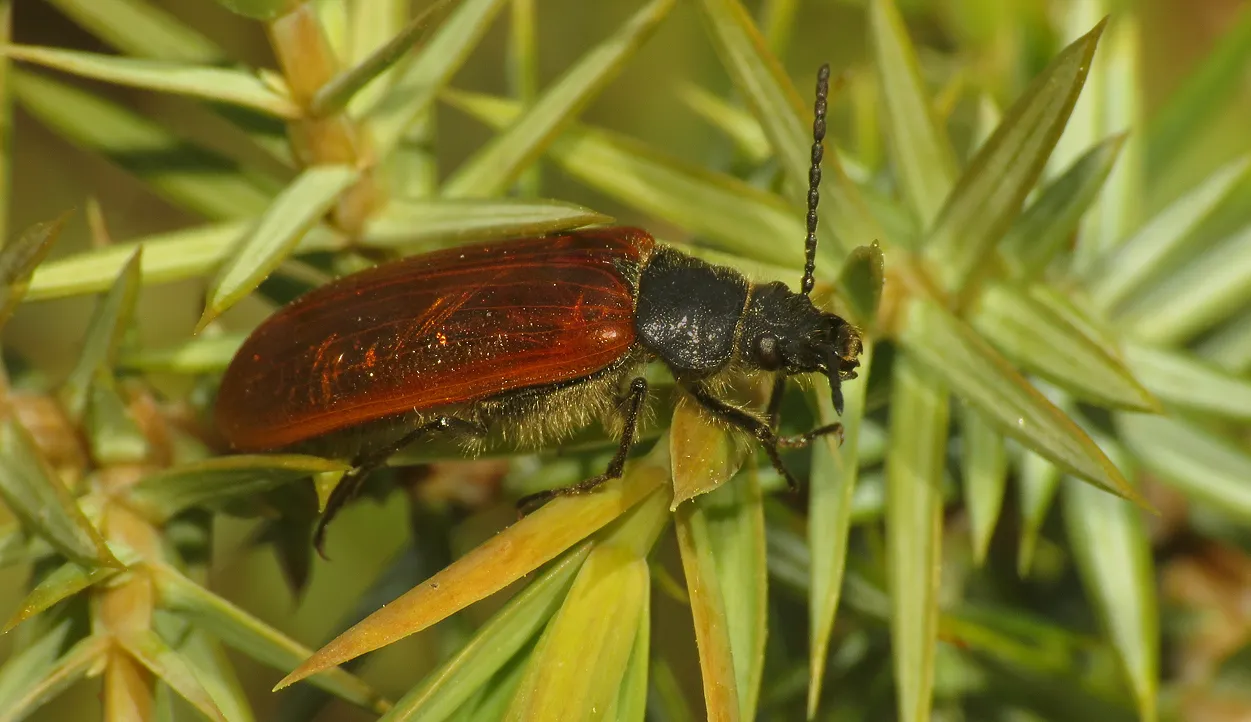
Here you can see the Omophlus lepturoides beetle among the spiky foliage of the Juniperus communis shrub.
Here you can see the young Bellardia trixago plant, and on the following four - shot picture ...
... you can take a look at the Filago pygmaea plants.
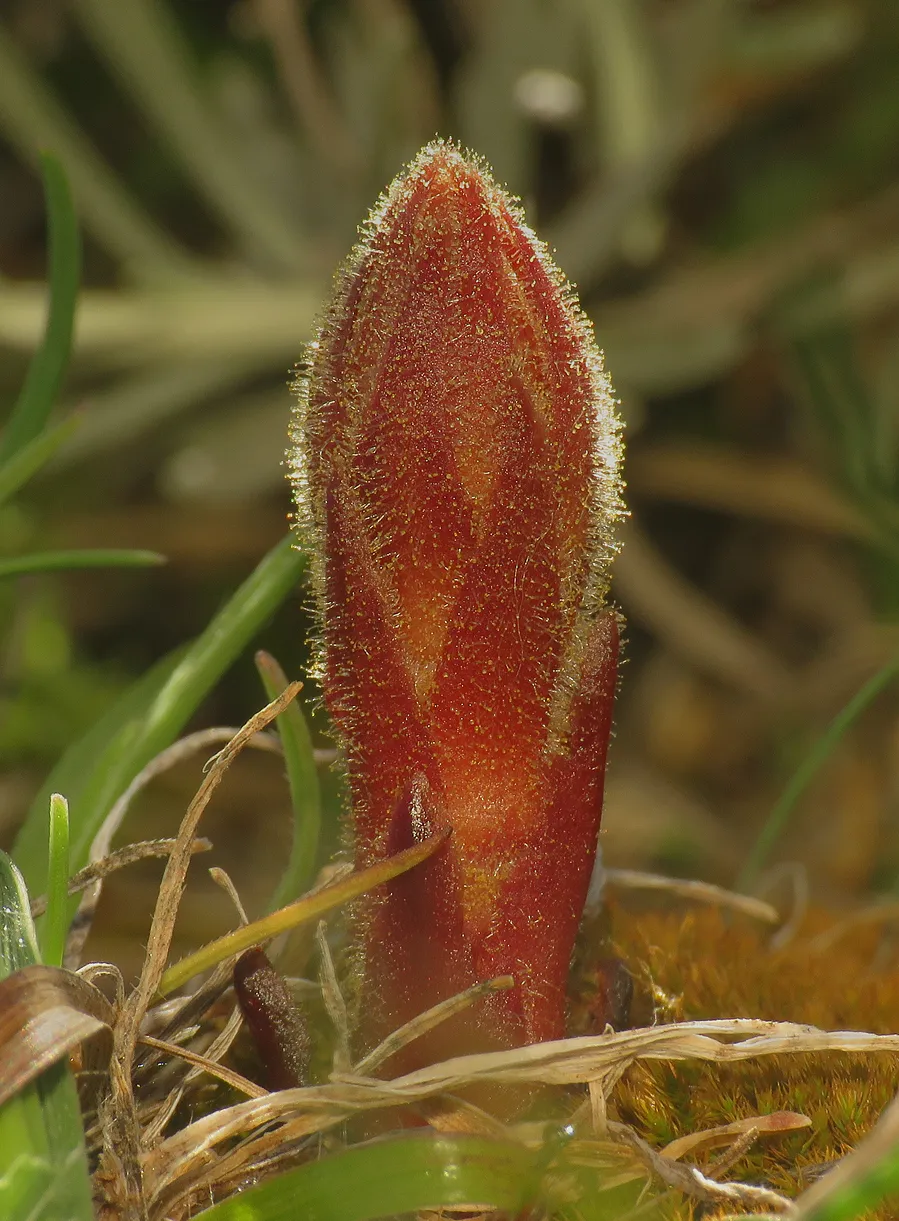
This is the fresh young sprout of the Orobanche alba, a parasitic plant that grows attached to the roots of other plants.
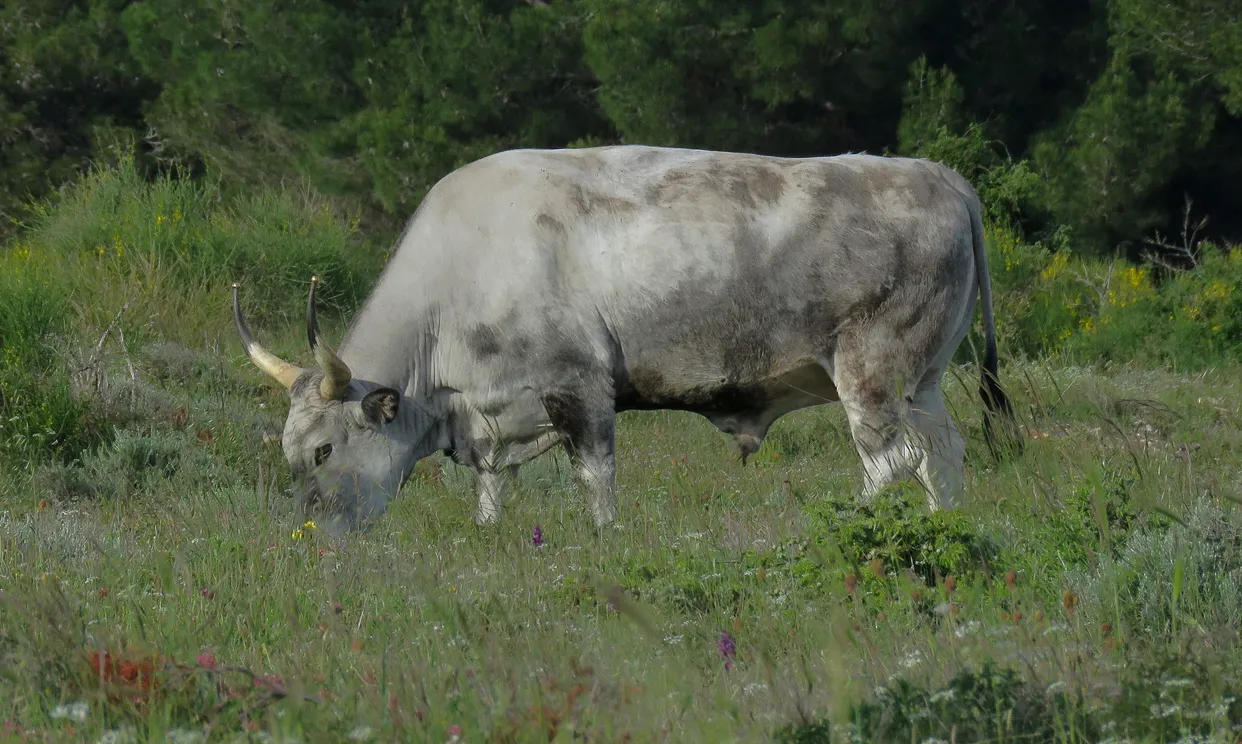
On the sixth of May 2021 ...
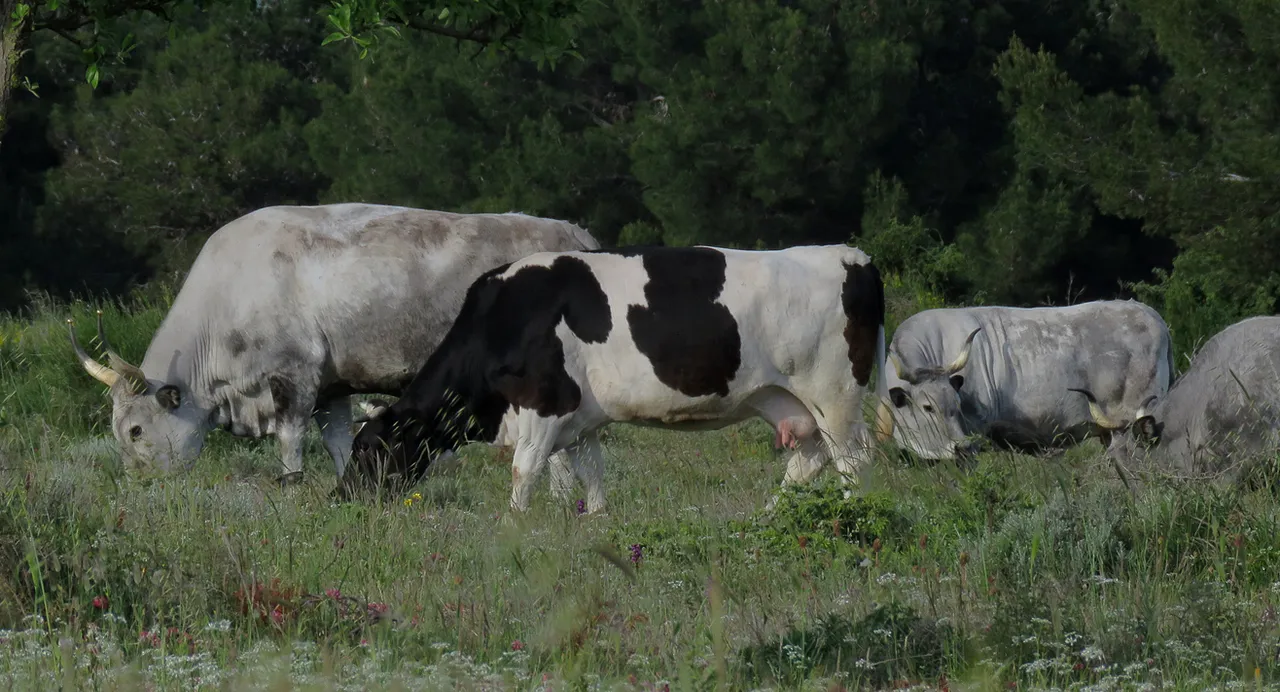
... while searching for orchids and other stuff to put in this post ...
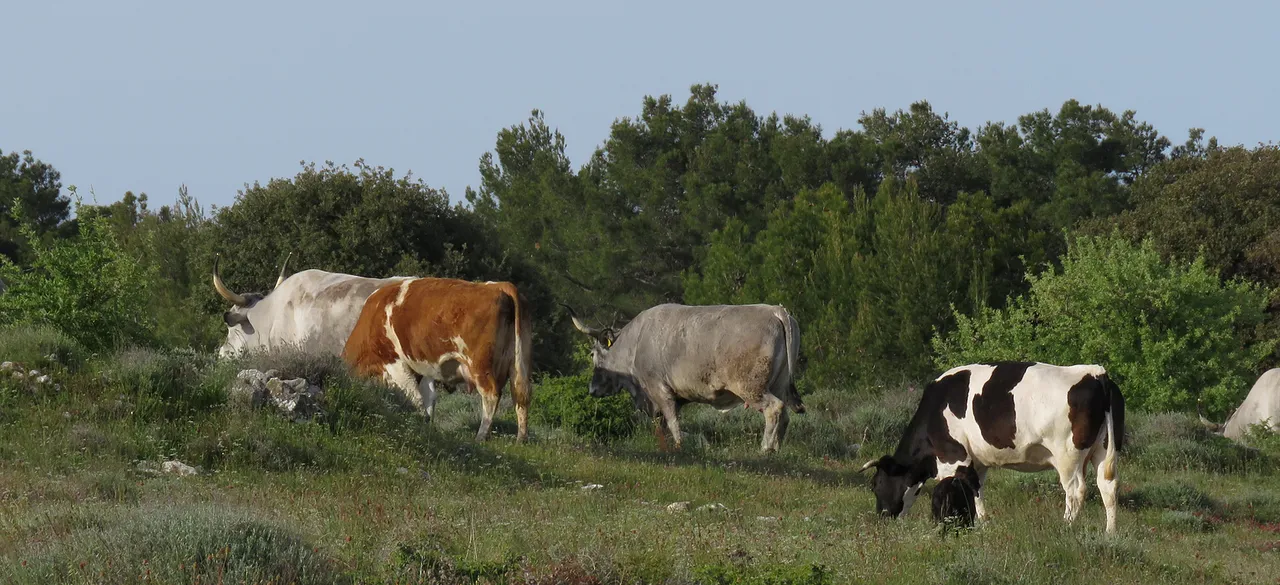
... I encountered a colorful bunch of cows.

They were slowly grazing across this Mediterranean landscape ...
... while the man on the tractor was driving behind.
It was quite a memorable scene ...

... so I followed them with my camera ...
... until they disappeared behind some pines.
And now ... with the group of Ophrys bertolonii orchids ...

... and the fresh sprout of the tongue Serapias that will soon develop its flowers ... it's time to end this botanical walk.
As always in these posts on HIVE, the photographs are my work

























